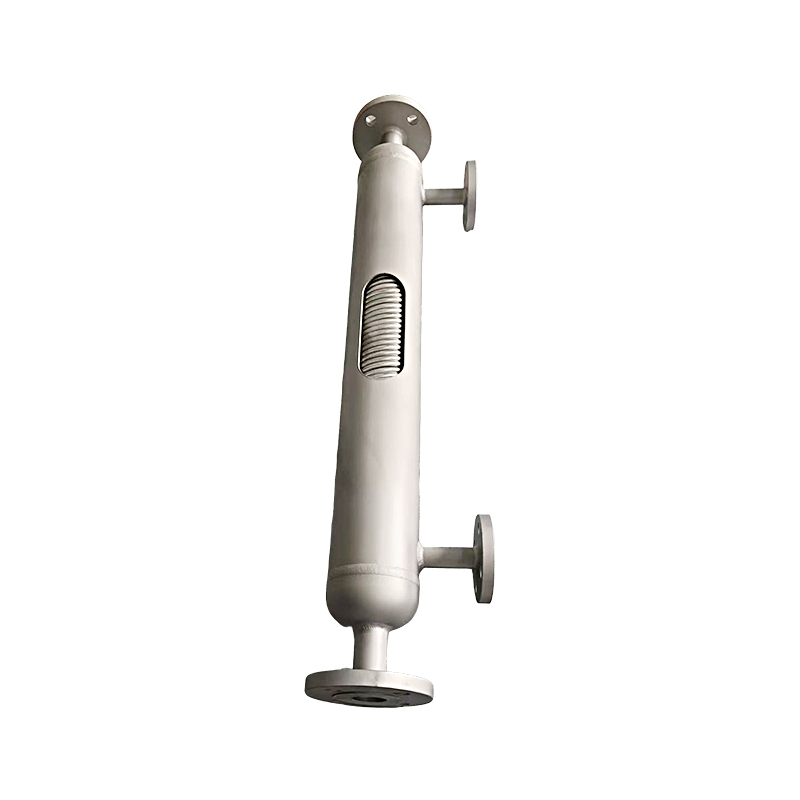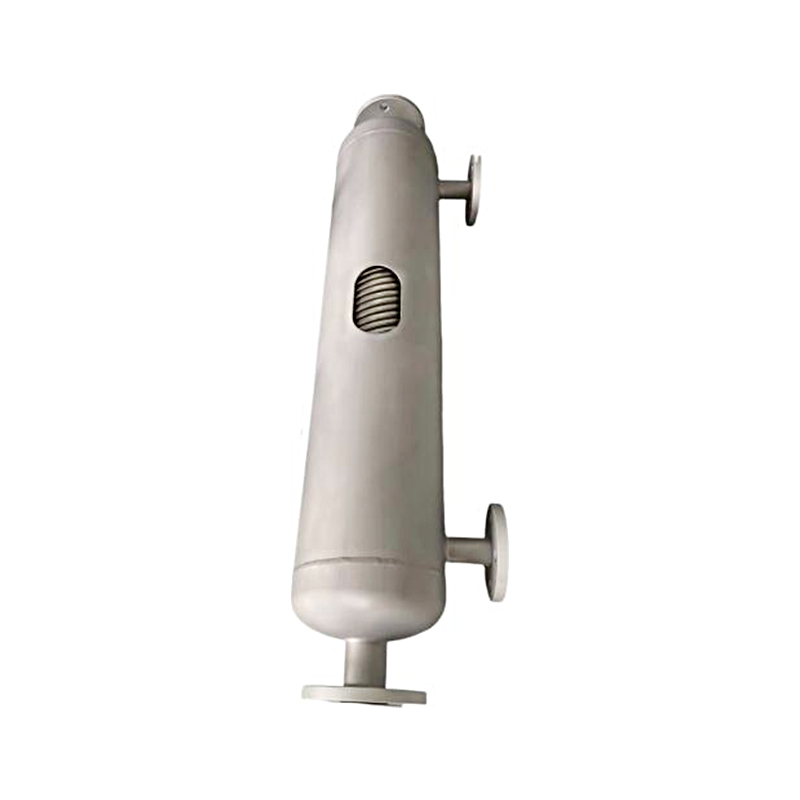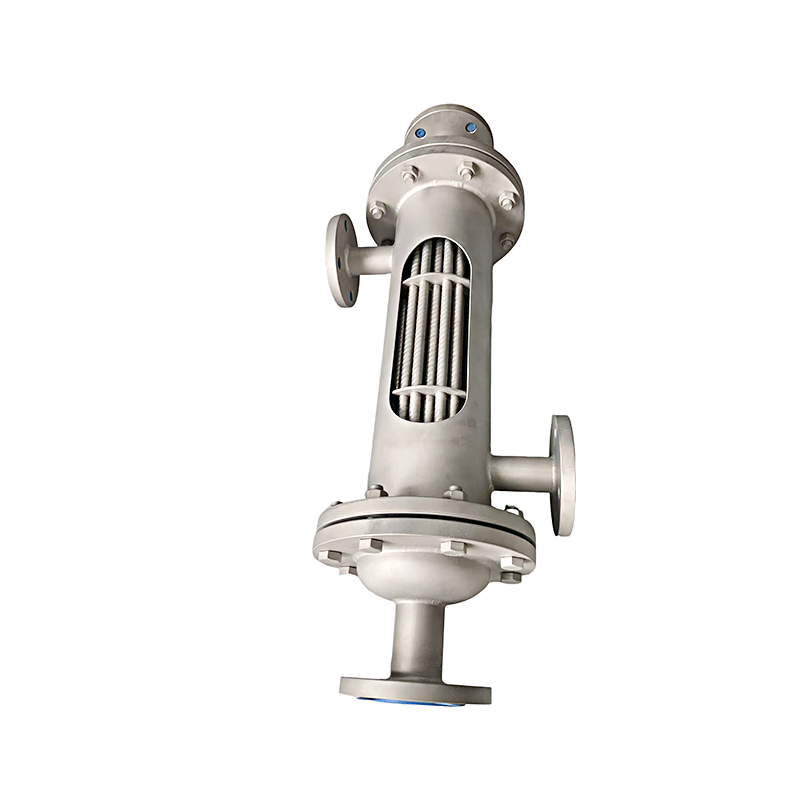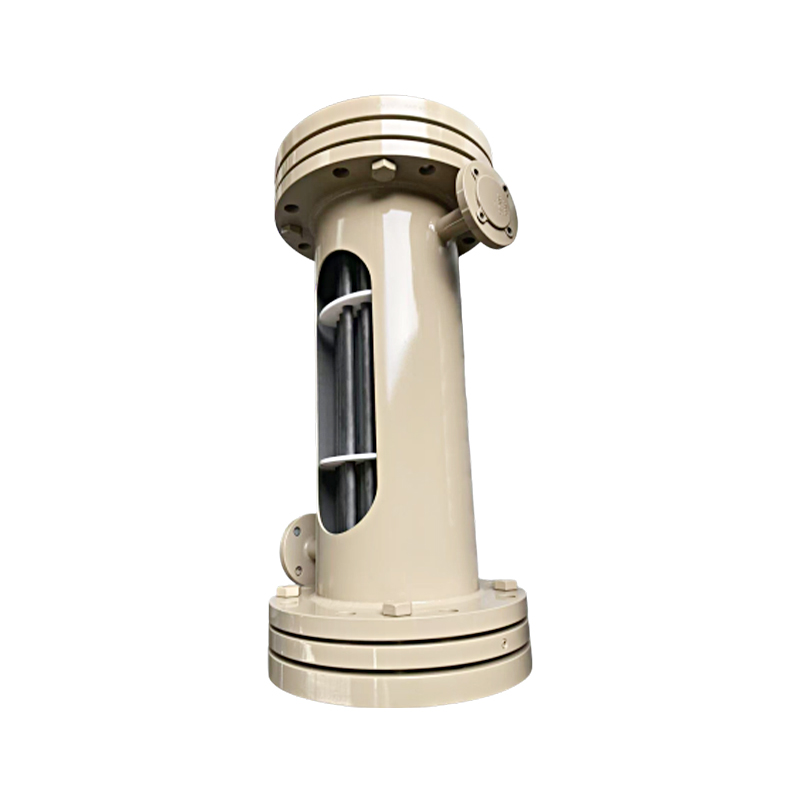How does corrosion-resistant silicon carbide heat exchanger help green manufacturing?
Release Time : 2025-07-29
Against the backdrop of global advocacy of sustainable development and environmental protection, "green manufacturing" has become the goal pursued by modern industry. To achieve this goal, enterprises must not only improve production efficiency, but also focus on reducing energy consumption and environmental pollution. Among many energy-saving technologies, corrosion-resistant silicon carbide heat exchanger plays an important role in promoting green manufacturing with its excellent performance.
Efficient heat transfer and reduced energy consumption
Due to the relatively low thermal conductivity, heat exchangers made of traditional metal materials often require a larger heat exchange area to meet process requirements under high temperature or high load working conditions, which not only increases equipment costs, but also leads to unnecessary energy loss. In contrast, silicon carbide material has an extremely high thermal conductivity (about three times that of stainless steel), which means that it can achieve more efficient heat transfer in a smaller space. Therefore, the use of silicon carbide heat exchangers can significantly reduce energy losses in the system, thereby achieving the purpose of energy saving.
Strong corrosion resistance and extended service life
The chemical industry often handles various corrosive media, such as acid and alkaline solutions, which poses a severe test to heat exchangers. Ordinary metal materials are easily damaged by corrosion, which not only affects production efficiency, but also generates a large amount of waste and increases the environmental burden. However, as a non-metallic ceramic material, silicon carbide has excellent chemical stability and is almost unaffected by any common chemicals. This means that silicon carbide heat exchangers can operate stably for a long time in harsh working environments, greatly reducing the waste of resources and the risk of secondary pollution caused by equipment replacement.
Improve process efficiency and promote recycling
In addition to directly reducing energy consumption, silicon carbide heat exchangers can also indirectly support green manufacturing by optimizing production processes. For example, in some fine chemical processes, precise temperature control is crucial to product quality. The use of high-efficiency silicon carbide heat exchangers can ensure that temperature regulation is more accurate and timely, thereby increasing product yield and reducing by-product generation. In addition, due to its excellent corrosion resistance, waste liquid treatment in the recycling process becomes safer and more reliable, which helps to build a closed-loop circular economy model.
Environmentally friendly design, reducing pollution emissions
With increasingly stringent environmental regulations, industrial enterprises are facing increasing pressure to reduce emissions. The design of silicon carbide heat exchangers takes this into full consideration. On the one hand, they do not require frequent maintenance, avoiding the leakage of harmful substances that may occur during maintenance; on the other hand, due to their compact structure and easy cleaning characteristics, they can effectively prevent the occurrence of internal scaling, ensure the cleanliness of the system, and reduce the discharge of cleaning wastewater. These characteristics are conducive to reducing the negative impact on the environment and are in line with the concept of green manufacturing.
Win-win economic and social benefits
Although the initial investment cost is high, in the long run, the economic and social benefits brought by silicon carbide heat exchangers cannot be ignored. First, due to its ultra-long service life and low maintenance requirements, it can significantly reduce the operating costs of enterprises; secondly, by improving energy utilization and reducing pollutant emissions, it not only responds to the country's call for energy conservation and emission reduction, but also enhances the social image of enterprises and enhances market competitiveness. More importantly, this technological innovation provides new ideas and technical support for the transformation and upgrading of the entire industry, and promotes the development of manufacturing industry towards low-carbon and environmental protection.
In short, in the current global trend of actively promoting green development, corrosion-resistant silicon carbide heat exchanger has become an important force in promoting green manufacturing with its unique performance advantages. Whether from the perspective of energy conservation and emission reduction, or focusing on improving the core competitiveness of enterprises, choosing a suitable heat exchange solution is particularly important.
Efficient heat transfer and reduced energy consumption
Due to the relatively low thermal conductivity, heat exchangers made of traditional metal materials often require a larger heat exchange area to meet process requirements under high temperature or high load working conditions, which not only increases equipment costs, but also leads to unnecessary energy loss. In contrast, silicon carbide material has an extremely high thermal conductivity (about three times that of stainless steel), which means that it can achieve more efficient heat transfer in a smaller space. Therefore, the use of silicon carbide heat exchangers can significantly reduce energy losses in the system, thereby achieving the purpose of energy saving.
Strong corrosion resistance and extended service life
The chemical industry often handles various corrosive media, such as acid and alkaline solutions, which poses a severe test to heat exchangers. Ordinary metal materials are easily damaged by corrosion, which not only affects production efficiency, but also generates a large amount of waste and increases the environmental burden. However, as a non-metallic ceramic material, silicon carbide has excellent chemical stability and is almost unaffected by any common chemicals. This means that silicon carbide heat exchangers can operate stably for a long time in harsh working environments, greatly reducing the waste of resources and the risk of secondary pollution caused by equipment replacement.
Improve process efficiency and promote recycling
In addition to directly reducing energy consumption, silicon carbide heat exchangers can also indirectly support green manufacturing by optimizing production processes. For example, in some fine chemical processes, precise temperature control is crucial to product quality. The use of high-efficiency silicon carbide heat exchangers can ensure that temperature regulation is more accurate and timely, thereby increasing product yield and reducing by-product generation. In addition, due to its excellent corrosion resistance, waste liquid treatment in the recycling process becomes safer and more reliable, which helps to build a closed-loop circular economy model.
Environmentally friendly design, reducing pollution emissions
With increasingly stringent environmental regulations, industrial enterprises are facing increasing pressure to reduce emissions. The design of silicon carbide heat exchangers takes this into full consideration. On the one hand, they do not require frequent maintenance, avoiding the leakage of harmful substances that may occur during maintenance; on the other hand, due to their compact structure and easy cleaning characteristics, they can effectively prevent the occurrence of internal scaling, ensure the cleanliness of the system, and reduce the discharge of cleaning wastewater. These characteristics are conducive to reducing the negative impact on the environment and are in line with the concept of green manufacturing.
Win-win economic and social benefits
Although the initial investment cost is high, in the long run, the economic and social benefits brought by silicon carbide heat exchangers cannot be ignored. First, due to its ultra-long service life and low maintenance requirements, it can significantly reduce the operating costs of enterprises; secondly, by improving energy utilization and reducing pollutant emissions, it not only responds to the country's call for energy conservation and emission reduction, but also enhances the social image of enterprises and enhances market competitiveness. More importantly, this technological innovation provides new ideas and technical support for the transformation and upgrading of the entire industry, and promotes the development of manufacturing industry towards low-carbon and environmental protection.
In short, in the current global trend of actively promoting green development, corrosion-resistant silicon carbide heat exchanger has become an important force in promoting green manufacturing with its unique performance advantages. Whether from the perspective of energy conservation and emission reduction, or focusing on improving the core competitiveness of enterprises, choosing a suitable heat exchange solution is particularly important.








